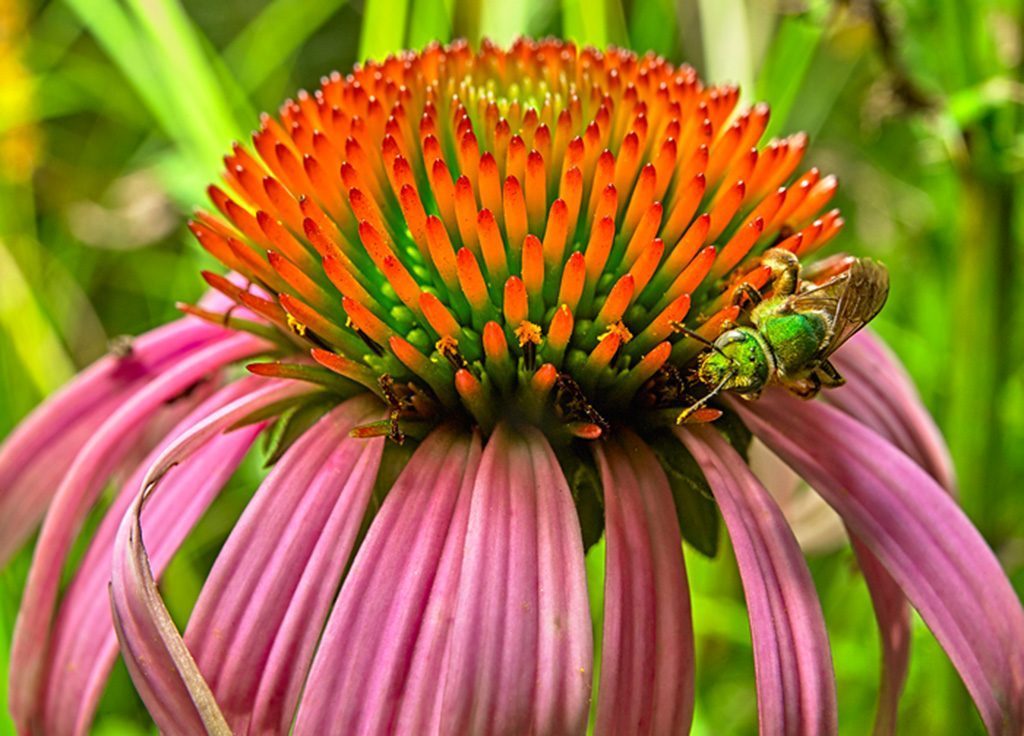
The wild bee Agapostemon virescens sits well camouflaged on this Echinacea blossom. The importance of these and other rare bee species for pollination has been underestimated.
A meadow with lush flowers and most of the fruits are only possible thanks to the work of many hard-working bees, bumblebees and wasps. Attracted by sugary nectar, the insects sit on the flowers, whereupon the pollen sticks to their bodies. When you visit the next flower, some of the pollen grains get stuck: it has been pollinated.
So far, research on the role of bees as pollinators has mostly focused on individual plant species and not on a meadow with an entire community of plants. Because two percent of all bee species are also responsible for 80 percent of plant pollination, less attention has been paid to other bee species in this context than the typical honey bees or bumblebees. But that’s now changed by Dylan Simpson from the University of New Jersey and his colleagues: They analyzed the encounters of almost 200 bee species with over 100 plant species and thus determined the pollination performance.
The results showed that an entire meadow community depends on two to seven times more bee species than the individual plant species. The greater the diversity of the plants growing there, the greater the number of pollinating bee species. The less common bees in particular played an important role: “Our work shows that rare visitors are also important for a meadow because they pollinate plants that no one else pollinates,” explains co-author Michael Roswell from the University of Maryland. “And that’s a good argument for why biodiversity is so important”